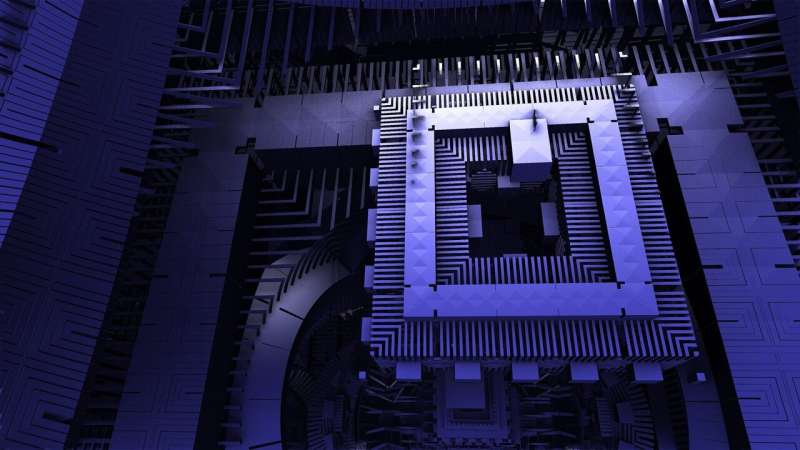This article has been reviewed according to Science X's editorial process and policies. Editors have highlighted the following attributes while ensuring the content's credibility:
fact-checked
peer-reviewed publication
trusted source
proofread
Unconventional interface superconductor could benefit quantum computing

A multi-institutional team of scientists in the United States, led by physicist Peng Wei at the University of California, Riverside, has developed a new superconductor material that could potentially be used in quantum computing and be a candidate "topological superconductor."
Topology is the mathematics of shape. A topological superconductor uses a delocalized state of an electron or hole (a hole behaves like an electron with positive charge) to carry quantum information and process data in a robust manner.
The researchers report in Science Advances that they combined trigonal tellurium with a surface state superconductor generated at the surface of a thin film of gold. The title of the paper is "Signatures of a Spin-Active Interface and Locally Enhanced Zeeman Field in a Superconductor-Chiral Material Heterostructure."
Trigonal tellurium is a chiral material, which means it cannot be superimposed on its mirror image, like our left and right hands. Trigonal tellurium is also non-magnetic. Nonetheless, the researchers observed quantum states at the interface that host well-defined spin polarization. The spin polarization allows the excitations to be potentially used for creating a spin quantum bit—or qubit.
"By creating a very clean interface between the chiral material and gold, we developed a two-dimensional interface superconductor," said Wei, an associate professor of physics and astronomy.
"The interface superconductor is unique as it lives in an environment where the energy of the spin is six times more enhanced than those in conventional superconductors."
The researchers observed that the interface superconductor undergoes a transition under a magnetic field and becomes more robust at high field compared with low field, which suggests a transition into a "triplet superconductor," which is more stable under a magnetic field.
Furthermore, through collaboration with scientists at the National Institute of Standards and Technology, the researchers showed that such a superconductor involving heterostructure gold and niobium thin films naturally suppresses decoherence sources from material defects such as niobium oxides that are a common challenge for niobium superconductors.
They showed that the superconductor can be made into high-quality low-loss microwave resonators with a quality factor reaching 1 million.
The new technology has applications in quantum computing, a field that takes advantage of quantum mechanics to solve complex problems that classical computers or supercomputers can't solve or can't solve quickly enough, according to the multinational technology company IBM.
"We achieved this using materials that are one order of magnitude thinner than those typically used in the quantum computing industry," Wei said. "The low-loss microwave resonators are critical components of quantum computing and could lead to low-loss superconducting qubits. The biggest challenge in quantum computing is to reduce decoherence or quantum information loss in a qubit system."
Decoherence occurs when a quantum system interacts with its environment, leading to the system's information getting mixed up with the environment. Decoherence poses a challenge for realizing quantum computers.
Unlike previous methods that require magnetic materials, the researchers' new approach uses non-magnetic materials for a cleaner interface.
"Our material could be a promising candidate for developing more scalable and reliable quantum computing components," Wei said.
Wei was joined in the research by his graduate students at UCR.
The technology has been disclosed to the UCR Office of Technology Partnerships and a provisional patent has been filed.
More information: Cliff Chen et al, Signatures of a Spin-Active Interface and Locally Enhanced Zeeman field in a Superconductor-Chiral Material Heterostructure, Science Advances (2024). DOI: 10.1126/sciadv.ado4875. www.science.org/doi/10.1126/sciadv.ado4875
Journal information: Science Advances
Provided by University of California - Riverside




















